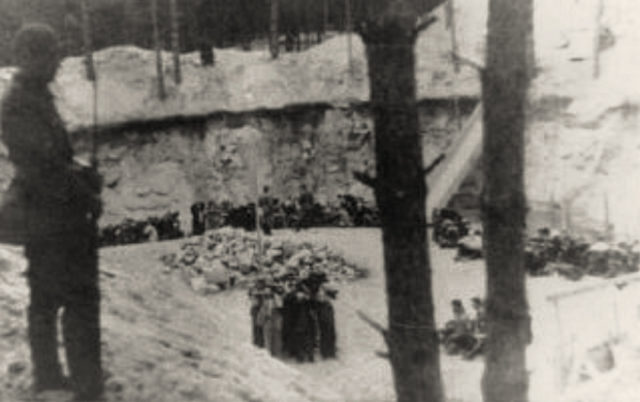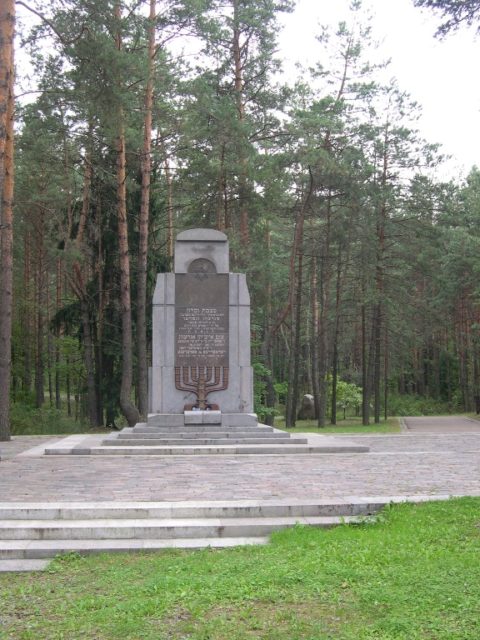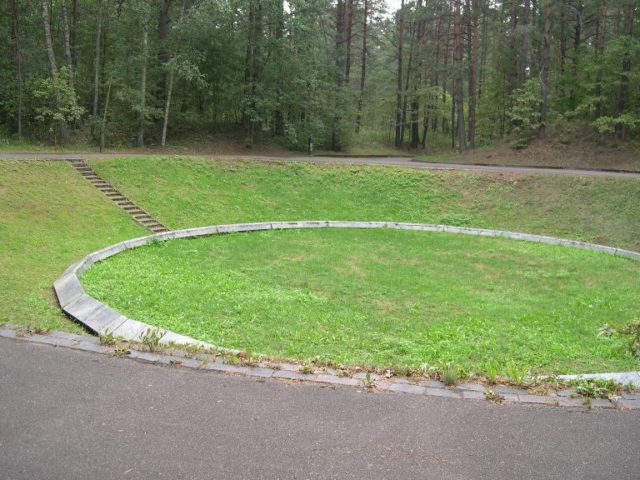Ponary is infamous for the ruthless massacre of more than 100,000 Jews, Soviets, and Polish POWs by the Nazis.
The conditions at the prison and certainty of a painful death were so imminent that a group of Jewish prisoners had to try and dig their way out.
To escape, they also had to burn the bodies of those already killed by Nazi death squads. The tunnel dug by these 80 Jewish prisoners was some 114 feet long, originating from the pit they were kept in.

The popular holiday resort had presented a serene image before the Second World War broke out. However, Nazis turned this paradise into a hell with their horrific acts of merciless killing.
The massacre of 100,000 prisoners, intellectuals, and Jews transformed the peaceful wood resort into a tomb of murdered innocents.
Realizing their predicament, a small group of prisoners decided to dig their way to freedom as a last desperate attempt in escaping the Nazi death squads. They were kept in pits near Ponary, only six miles from the city of Vilnius, now the capital of Lithuania.
Modern technology has now revealed the true story of their escape by allowing archaeologists to find the 114-foot tunnel.

After the Nazis had occupied the region, dozens of death squads were quickly formed and sent to gather up Jewish civilians. They were then taken six miles south of the city; the prisoners were forced to dig massive pits, which became their graves as they were gunned down in cold blood.
In the early days of the occupation, the horrendous task was carried out by Nazi sympathizers in Lithuania, who killed 7500 Jews in the outskirts of the city and then buried them in the woods.
Very quickly this massacre style was adopted by the Nazis in the region as an official policy, and by the end of the war a total of 100,000 innocent civilians and prisoners of war were murdered and buried in mass graves in the Ponary woods.

The escape story of these men started when towards the end of the war the Nazis ordered a group of Jews to extract the massacred prisoners and burn their bodies. As the Soviet troops closed in around Nazi-occupied Poland, the perpetrators feared losing the area surrounding the kill zone of Ponary to the Soviets.
Having killed hundreds of thousands of innocent people, the Nazis wanted to destroy the evidence of their crimes in the region. The group of prisoners did as they were told; however, after the completion of their grisly task, they were imprisoned in one of the pits.
They were left there while their captors awaited orders; the men feared they would soon be killed themselves.
Yet the prisoners refused to die quietly, and they soon planned a daring escape. They managed to dig a tunnel through the pit. Out of eighty, only twelve men escaped through the tunnel; and out of those twelve, only three made it to safety. The survivors lived to tell the tale for future generations and confirm the fate of their fellow prisoners.
